How to Distinguish Mattress and Bed Sheet Sizes
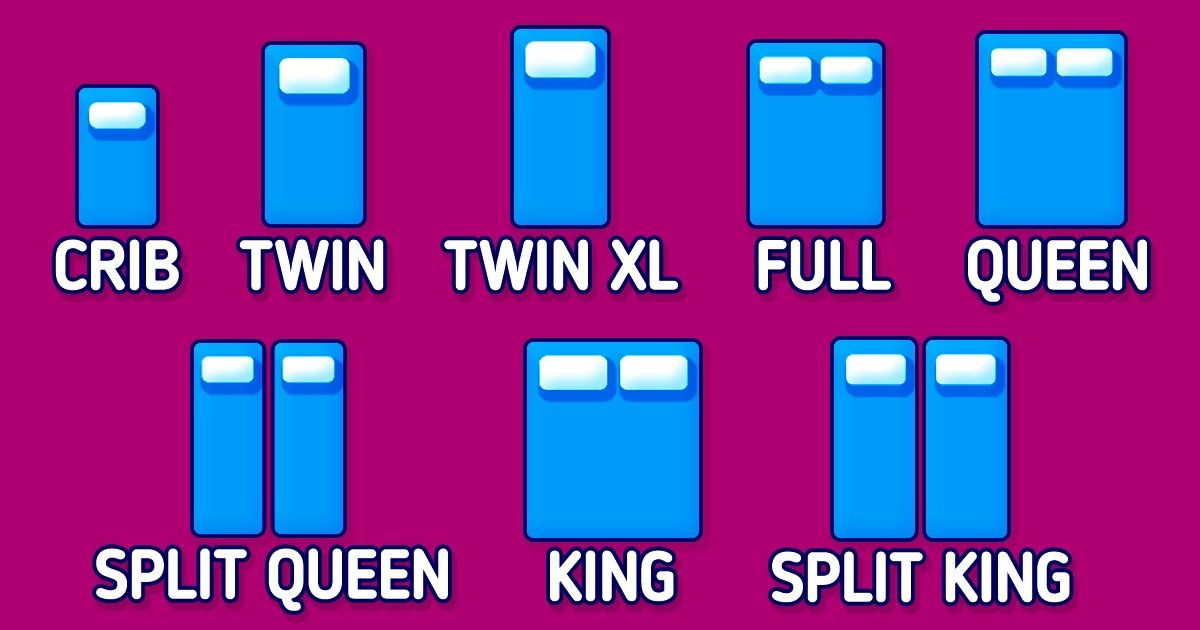
If you need to buy sheets, you might be wondering what size is the best one. 5-Minute Crafts has prepared a small guide for you to use to measure and figure that out.
⚠️ Keep in mind that some new mattresses are deeper than older ones, for example, and that manufacturers might add or remove a few inches here and there. That’s why our article is merely a guideline you can use to have an idea of the different sizes available out there.
Get to know the different types of mattresses.
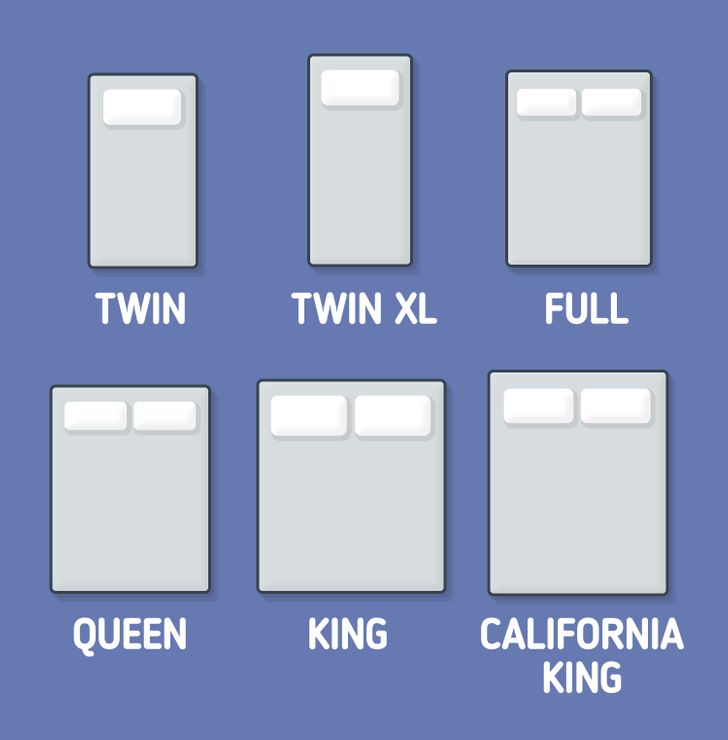
Before buying any sheets for your bed, you might want to figure out what size it is. Here is a guide of the different sizes that you will commonly find across the U.S. and sometimes abroad too. Remember that this guide is a non-comprehensive one, so there might be other sizes not included here. All values are approximate.
- Twin: 38 inches by 75 inches. Typically suitable for toddlers and children.
- Twin XL: 38 inches by 80 inches. Perfect for a child that’s tall and needs more leg room.
- Full or Double: 54 inches by 75 inches. Ideal for active sleepers and older children as there’s more room than in twin and XL beds.
- Queen: 60 inches by 80 inches. Ideal for couples living in smaller bedrooms.
- King: 76 inches by 80 inches. Ideal for couples that need more personal space and that have a large bedroom.
- California King: 72 inches by 84 inches. Ideal for someone taller than 6 feet.
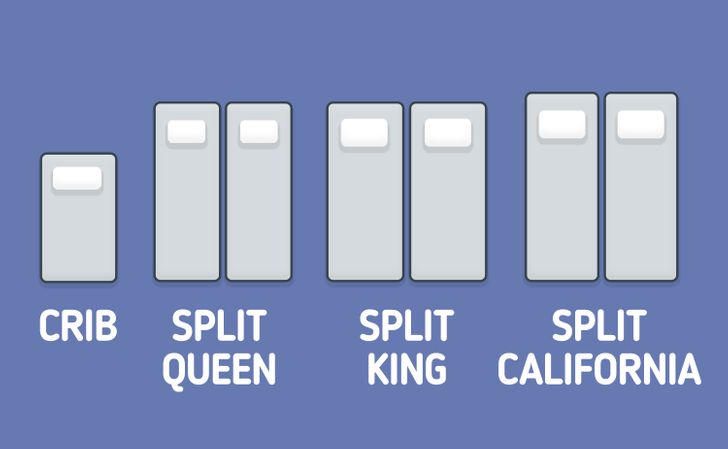
Then, there are less common sizes, like the following:
- Crib: A standard crib size is 52 inches by 27 inches. These are meant to fit your child during the first 18–24 months. However, there are also mini cribs adapted to smaller spaces. These are typically 38 inches by 24 inches. Just keep in mind that due to their smaller size, mini cribs won’t fit your child as long as a standard crib will.
- Split Queen: This is essentially a Queen size bed made of 2 separate 30 inch by 80 inch mattresses put together. Its advantage is that each mattress can have a different level of firmness, so you can always get what you prefer even if you’re sharing the bed with someone else. It’s also easier to move.
- Split King: A full split king mattress is basically 2 separate twin XL mattresses side by side measuring 38 inches by 80 inches so 76 inches by 80 inches in total.
- Split California: This is 2 separate mattresses that are 36 inches by 84 inches. It’s one of the least common sizes to be found.
Determine the sheet size you need.
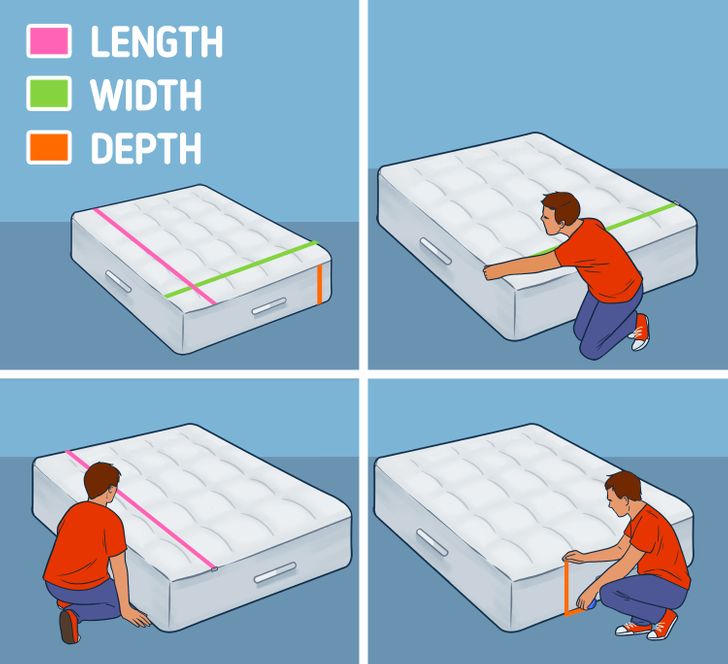
- If you don’t know it already, take a minute to understand what you are measuring: the width (W), length (L), and depth (D) of the mattress.
- Stretch the measuring tape across the mattress to measure the width. Start at the bottom right corner of the mattress and stretch it all the way to the bottom left corner. Write it down.
- Place the measuring tape at the top of the mattress, at the headboard. Stretch it to the bottom of the mattress where it ends. This is the length of the bed. Write it down.
- Place the measuring tape at the top of the mattress. Extend it to the bottom of the mattress to measure the depth, or thickness. Write it down.
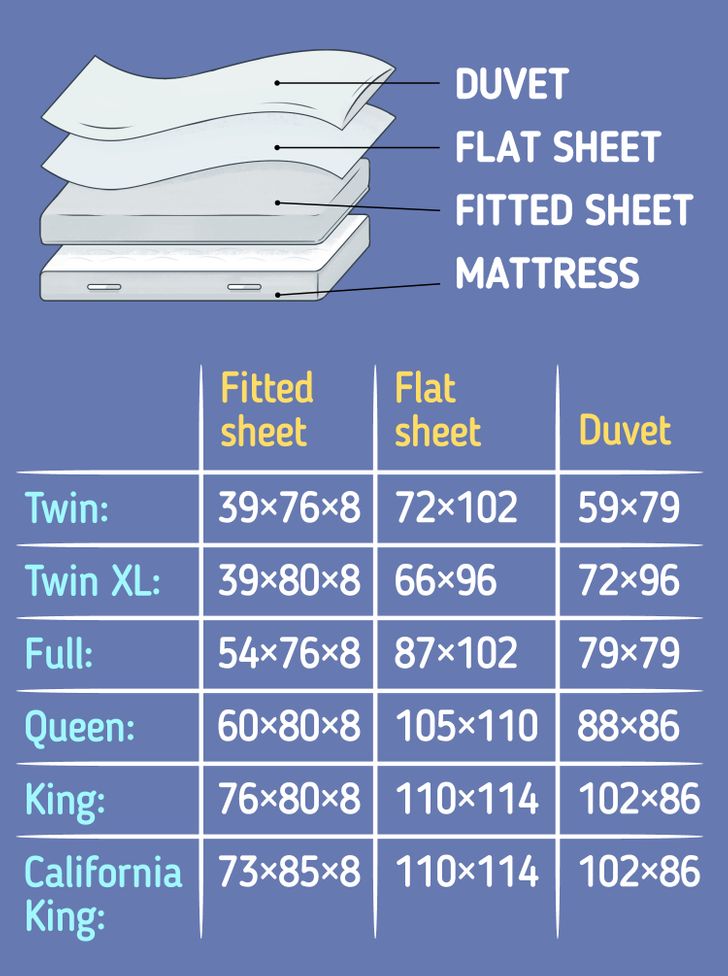
5. Pick out your sheets based on the size of the mattress (see the table above, all units are in inches). Please keep in mind that some mattresses and bedding manufacturers may add or subtract a few inches from the sizes above, so that’s just a guideline.
- Note: The difference between a comforter and a duvet is that the latter comes in 2 separate pieces, an insert and a cover.
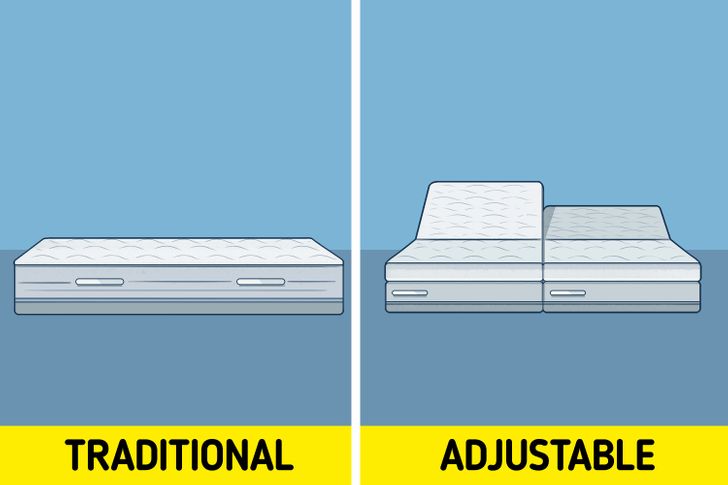
If you have a split mattress, traditional bedding will fit unless it is on an adjustable bed frame. In that case separate fitted sheets for, say, the 2 twin XL mattresses are required if you have a king size bed.